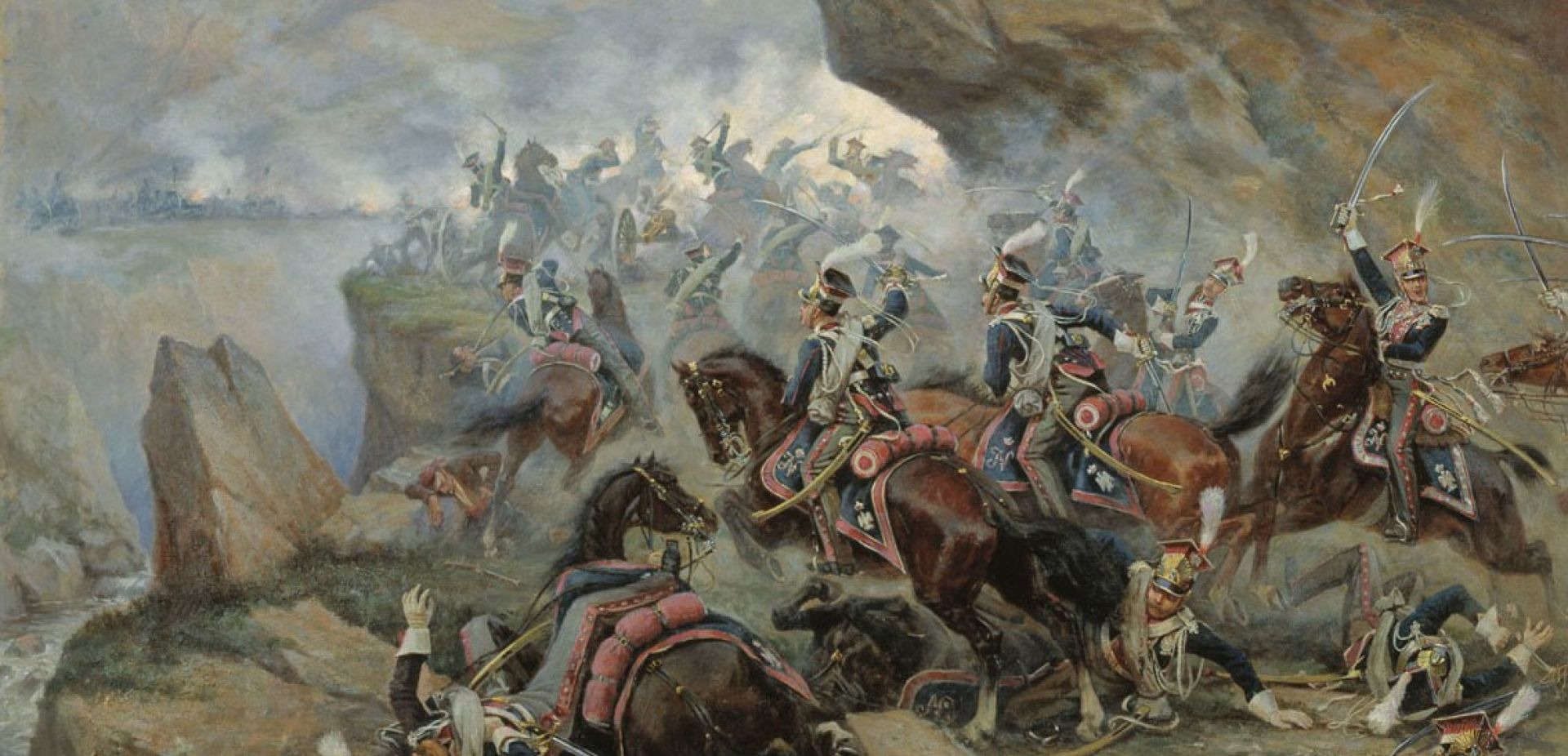"This all is great and wonderful", as the hero of one of Łukasz Orbitowski's novels would say. However, the greatest service to the Somosierra charge and its heroes was rendered by Princess Czartoryska née Fleming. Indeed, this character could be criticised for many things. In her youth, she committed adultery with true Enlightenment and extravagant neglect, and it is possible that her children had five different fathers, not counting her husband. However, from the perspective of later achievements, this is unimportant. Let bygones be bygones. If this principle could be applied to Prince Józef, it couldn't be denied to Czartoryska. She had made enormous and inalienable contributions to the nation. Even though she had a place to live, she made efforts to restore the Puławy residence, plundered by the Muscovites during the Kościuszko Uprising. Then, she separated two buildings from the complex to house the first museum of Polish history.
In 1815, the institution enjoyed such a broad and well-established reputation that the duchess did not have to look for new exhibits. People already went out of their way to question her about the chance to present memorabilia. On February 16 of the same year - before the final liquidation of the Duchy - Wincenty Krasiński wrote to the duchess. The commander of the disbanded regiment of Napoleon's cavalrymen wrote the following (due to the anachronism of the general's Polish and with younger readers in mind, it was necessary to modernise the vocabulary radically and include some explanations):
"Your Majesty the Duchess! Corps of officers of the former first regiment [i.e. 1st Light Cavalry Lancers Regiment of the Imperial Guard], in the [political] change of today's world, after so many years of fighting -̶ wanting to give Your Majesty proof of respect for Her virtues, that Her attachment to the Homeland aroused in them [i.e. in officers] -̶ they offer Her [contribute generously] one of the banners of their regiment for the collection of Sacred souvenirs of national fame, which - collected by Your Majesty - will be extorted from foreign hands and torn out from the course of time itself. This sign [i.e. the banner] was leading in about hundreds of victories and was stuck on the walls of Madrid [so, obviously it had to pass through the throat of Somosierra] and the Kremlin [of course – the Kremlin in Moscow]. Thousands of Polish young people following it believed they were happy [they considered themselves happy], able to shed their blood for the Homeland and its fame.
 SIGN UP TO OUR PAGE
SIGN UP TO OUR PAGE

Izabela Czartoryska did not underestimate the gift. On the contrary, she ordered the banner to be displayed in a worthy place, namely in the "frame on the right side" of the entrance to the Temple of the Sibyl - where it was seen - and this fact was recorded in an autobiographical novel by Konstancja Biernacka. The pennant "made famous at Samo-Sierra" was displayed here in the company of a banner "freeing Vienna from the violence of the Turks"; most likely bullets or cannonballs - "from Racławice and Dubienka", as well as the "the marshal staff of the constitutional parliament" - Stanisław Małachowski – a relic which incidentally survived until our days. However, the banner did not survive because in 1831, Puławy once again fell to the Muscovite invader.
Women – for men?
Then how should we interpret the fact that women helped to keep alive – to put it in a lofty but completely honest way – the flame of Somosierra's memory? Anyway! Not only then, but in fact the period of the Duchy of Warsaw is a real phenomenon of 215 years separating contemporary Poland from that foggy November morning.
Just signalling a continuation, it is impossible not to mention the role that Maria Konopnicka's poem "The Somosierra Gorge"- probably the most popular of all the works included in the "Historical Songbook" from the early 20th century, modelled on Niemcewicz - and it is quite a large book. One might bristle at its questionable poetic value and numerous inaccuracies. "And whose name is this, / Resonating with fame, / Who fought for France / with Spaniards, bleeding again? / It's the Polish cavalry, / famous mounted troops / capture Somosierra ravine/true miracle divine" This thing gets into your mind as painlessly as Mickiewicz's "Reduta Ordona", which means that Konopnicka must have learned some secrets of the Polish language. This was not achieved by many poets who were highly regarded for their intellectual skills or the beauty of their lyrical phrases.
So how should we then interpret this fact of such female involvement? Is it worth interpreting that the heroines of this story represented "false consciousness" or "collaborated" with the patriarchy? This would be offensive to them and, generally speaking, rather unwise. Perhaps it is better, instead of strange hermeneutics, to assume that culture, in this case, national culture, allows us to overcome the tensions existing between the genders - and in this sense, it is neither male nor female; it has been the common gender. "Somosierra" women did not serve men or try to imitate them mindlessly. By working for the collective imagination, they served the national cause. After all, it concerned them as well.
– Dominik Szczęsny-Kostanecki
TVP WEEKLY. Editorial team and jornalists
– Translated by Katarzyna Chocian


 SIGN UP TO OUR PAGE
SIGN UP TO OUR PAGE
 Izabela Czartoryska did not underestimate the gift. On the contrary, she ordered the banner to be displayed in a worthy place, namely in the "frame on the right side" of the entrance to the Temple of the Sibyl - where it was seen - and this fact was recorded in an autobiographical novel by Konstancja Biernacka. The pennant "made famous at Samo-Sierra" was displayed here in the company of a banner "freeing Vienna from the violence of the Turks"; most likely bullets or cannonballs - "from Racławice and Dubienka", as well as the "the marshal staff of the constitutional parliament" - Stanisław Małachowski – a relic which incidentally survived until our days. However, the banner did not survive because in 1831, Puławy once again fell to the Muscovite invader.
Izabela Czartoryska did not underestimate the gift. On the contrary, she ordered the banner to be displayed in a worthy place, namely in the "frame on the right side" of the entrance to the Temple of the Sibyl - where it was seen - and this fact was recorded in an autobiographical novel by Konstancja Biernacka. The pennant "made famous at Samo-Sierra" was displayed here in the company of a banner "freeing Vienna from the violence of the Turks"; most likely bullets or cannonballs - "from Racławice and Dubienka", as well as the "the marshal staff of the constitutional parliament" - Stanisław Małachowski – a relic which incidentally survived until our days. However, the banner did not survive because in 1831, Puławy once again fell to the Muscovite invader. 



